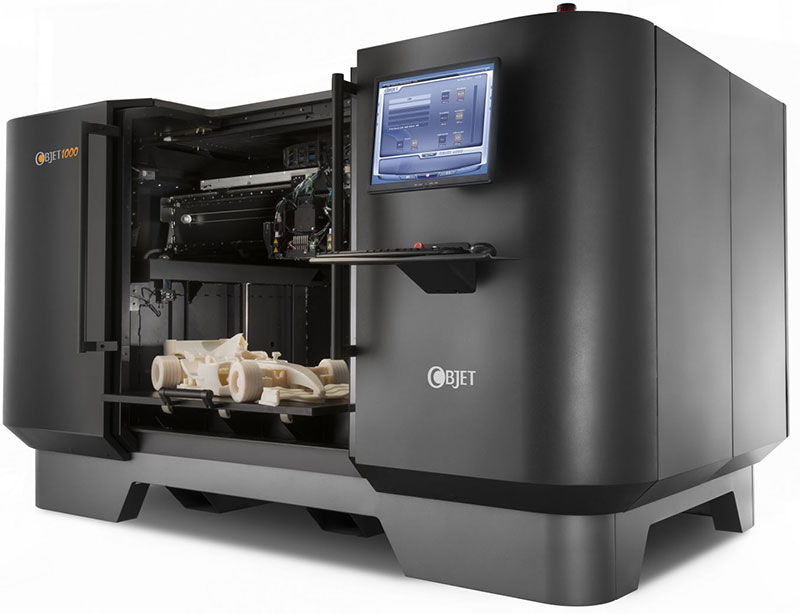3D Printing Promises to Transform Manufacturing & Supply Chains
Using a million-dollar metal 3-D printer and the right computer-modeled recipe, a trained operator can create virtually any object out of metal in a matter of hours or days.
Behind the glass of an SUV-sized printer, a laser fuses fine powders of steel and tungsten, layering the material and building items from the ground up.
The finished products, displayed neatly on a nearby table, range from the intricate - a safety device for nuclear weapons - to the simple - a basic counterweight.
The creations are born from Selective Laser Melting, a state-of-the-art 3-D printing process being perfected by researchers at Lawrence Livermore Lab in California’s Bay Area.
Using a million-dollar metal 3-D printer and the right computer-modeled recipe, a trained operator can create virtually any object out of metal in a matter of hours or days.
“I honestly think this will impact everybody’s lives. … Complexity is free. It doesn’t cost any more to build a complex part than it does a simple part,” said Livermore lab scientist Wayne King.
First developed in the 1970s, three-dimensional printing - creating objects by layering plastics, metals and other materials with the aid of computer models - has leaped into the mainstream, boosted by the emergence of home-based 3-D printers and billions of investment dollars from companies such as Google and General Electric.
At the Livermore lab, researchers are combining 3-D printing technology with high-performance computing to quicken and refine manufacturing processes, and exploring unique printing methods and exotic ink mixtures that aren’t being tested anywhere else.
The collective advances could have profound implications, scientists say, for the armed forces, the automotive and aerospace industries - and for American manufacturing in the next decade.
Skeptical of the technology at first, King, director of the lab’s Accelerated Certification of Additively Manufactured Metals Initiative, said he was quickly “stunned” by what the laser melting machines could do.
“Unlike a production line, where you make the same thing every day, you can make one thing in the morning and one (different) thing at night,” he said. “We believe in it big time.”
Laser melting is one of four key 3-D printing technologies with which lab scientists are experimenting, each with its own strengths and weaknesses:
- With direct ink writing, a liquid mixture of polymers and metals are squeezed through a microscopic nozzle layer-by-layer, like toothpaste from a tube, to create materials impossible to build by traditional manufacturing.
The process, according to lab engineer Chris Spadaccini, has endless possibilities for making extremely lightweight yet durable padding, stretchable antennae for use in artificial vocal cords and flexible sensors. Fitted in the helmets of military members and football players, the sensors could be bonded into the padding to provide a real-time report of where the damage occurred, analyze how the impact affected the body and provide an appropriate protective response.
“If you could have the shock and impact history mapped out, it would be a real game-changer,” Spadaccini said.
- Through a technique using ultraviolet light and a photosensitive polymer resin — the technical name is Projection Microstereolithography - lab researchers are finding ways to create ultralight yet super-strong materials on a microscopic scale. The light burns a 3-D image into the liquid resin, layer-by-layer, which hardens when hit by the UV light. The excess resin is then removed, leaving the object.
Teams of scientists, chemists and electrical engineers are employing this approach to construct tiny “microlattices” - geometric building blocks similar to cells in the body. When bonded together, the resultant material is on par with the lightest solids on earth, but strong enough to withstand thousands of times its own weight.
The space-age material has potential applications in transportation, aerospace, automotive and other industries.
“You can have something that is really light and also really strong, which was traditionally a trade-off,” said staff engineer Xiaoyu “Rayne” Zheng.
- The final technology employs a liquid suspension of nanoparticles - ceramics, polymers and metals - that are charged so that they assemble and stick to a pattern on a surface material wherever light comes in contact with the surface.
It’s something like paint that doesn’t need to dry. Researchers say this process, called electrophoretic deposition, can create super-lightweight armor that would allow troops to move more easily on the battlefield, and would be less expensive and up to 20 percent more effective than steel at protecting the body.
The variety of applications leads scientist King to envision a revolution in manufacturing in the next decade, with fully automated shops producing a variety of items using different printing technologies. A single operator could upload a job, press print and create, well, almost anything.
To save time and money on costly experiments, King and his team are coupling laser melting with the lab’s supercomputers to find optimal recipes for making parts. Eventually, he said, each 3-D printed part will carry a digital fingerprint - or birth record - that will follow it for its entire life, making it simple to check the part’s integrity and history down to individual grains of matter.
But what’s really revolutionary for manufacturing, according to lab machine operator Paul Alexander, is that engineers no longer have to design under traditional constraints.
“(3-D printing) provides the answer to some very difficult challenges,” he said. “You can make parts with functionality as your first criteria, and tailor them to the tools available.”
Source: San Jose (Calif.) Mercury News
Related: The UPS Store Expands 3D Printing Across the U.S.A
 .
.














